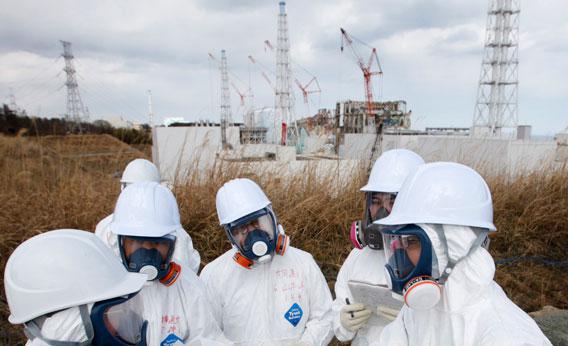Everybody who gets cancer in Japan over the next 40 years will no doubt blame their misfortune on radiation from Fukushima Daiichi. This will probably be the case for many other diseases too, ranging from heart failure to nose bleeds—as happened after the catastrophic explosion in 1986 at Chernobyl, a Soviet nuclear power station in Ukraine. This would be entirely understandable but will have no basis in science.
On April 12, 2011, a month after the tsunami struck, Japan’s Nuclear and Industrial Safety Agency announced that it was raising the grading of the Fukushima Daiichi event from five to seven—the highest level on the International Nuclear and Radiological Event Scale (INES). This helped to create the misleading impression that the event was as bad as Chernobyl, and has since been exploited in anti-nuclear propaganda despite the fact that there is no possibility that the physical health consequences of Fukushima Daiichi will be anywhere near as bad as those of Chernobyl.
As far as anyone knows, no member of the public received a significant dose of radiation attributable to the Fukushima Daiichi reactor emergency and no physical health effects of radiation should be expected.
The INES, introduced by the International Atomic Energy Agency in 1990, rates nuclear incidents and accidents on a scale that runs from zero to seven. It is based on off-site and on-site effects, and on the degradation of the nuclear plant’s “defense in depth.” Before Fukushima Daiichi, only one accident—Chernobyl—had been rated level seven.
Chernobyl was the worst that could happen. Safety and protection systems failed and there was a full core meltdown in a reactor that had no containment. In the “defense in depth” of nuclear power plants outside the former USSR, containment is an essential engineered safety feature.
The figures tell a story: 237 Chernobyl workers were taken to hospital with suspected acute radiation sickness; 134 of these cases were confirmed; 28 were fatal; about 20 other workers have since died from illnesses considered to have been caused or aggravated by radiation exposure; two workers died from other causes at the time of the accident and another disappeared—presumed dead.
On top of that, it has been estimated that about 4000 people will die (or may already have died) from radiation-induced cancer, including workers exposed directly to radiation, and members of the public exposed to the huge release of radioactive material from the reactor. About 4000 cases of thyroid cancer, which typically kills about 5 percent of people who get it, have been attributed to inhalation and ingestion of radioactive iodine by children.
At Fukushima Daiichi, the reactors shut down safely when struck by the magnitude-9 Tohoku earthquake, the fourth largest ever recorded. But problems arose after they were inundated by a much larger tsunami than had been anticipated when the nuclear plant was designed. This caused the loss of all power on the site so that cooling systems failed and some of the reactor cores overheated. Radioactive fission products were released and hydrogen was generated by chemical reaction. The reactor containments were partially effective, although they were damaged by hydrogen explosions and possibly by molten fuel.
Again, the casualty figures tell their own story. Severe potential hazards did exist on the reactor sites because of high levels of radiation, but health controls were mainly effective. There were no deaths attributable to radiation. Two workers received burns from beta radiation. They were discharged from hospital after two days. Two workers incurred high internal radiation exposure from inhaling iodine-131, which gives them a significant risk of developing thyroid cancer.
Doses incurred by about 100 other workers have been high enough to cause a small risk of developing cancer after 20 or more years. But the risk is very small indeed. About 25 percent of the population dies from cancer whether accidentally exposed to radiation or not. This rate might be increased by an additional 1 or 2 percent among the exposed workers.
What is more, exposures to radiation were nowhere near high enough to cause acute radiation sickness. Importantly, there have been no radiation injuries to children or to other members of the public.
The INES was intended to aid public understanding of nuclear safety. In fact, it has caused more confusion. It has also probably added to the mental anguish of the Japanese people.
The accident at Fukushima Daiichi was moved to the top of the scale a month after the tsunami for technical reasons, when the estimate of radioactive material released exceeded the International Atomic Energy Agency’s criterion for level 7. However, the amount of iodine-131 escaping from all the reactors at Fukushima Daiichi was less than 10 percent of the amount released at Chernobyl, and the release of caesium-137, the next most important fission product, was less than 15 percent of the Chernobyl total.
Unless it is to be scrapped entirely, the INES should be substantially modified. One possibility is to divide level seven into several sub-levels. But perhaps a better option might be to start again. A scale based on health effects would mean a lot more to nonspecialists than the technical and scientific terminology that is used at present.
This article originally appeared in New Scientist.
